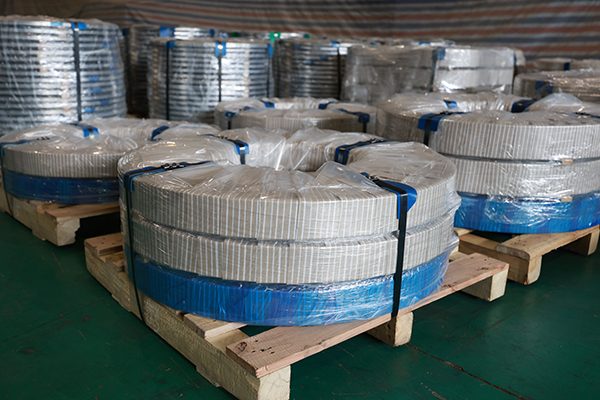430 Stainless Steel
DSM
1.4016
430
SUS 430
10Cr17
General-purpose steel with good corrosion resistance, used for building interior decoration, household appliances, and household appliance parts. The brittle transition temperature is above room temperature, and is sensitive to notches, so it is not suitable for making bearing spare parts below room temperature

What is 430 stainless steel coils?
430 stainless steel is a popular and widely used ferritic stainless steel. It belongs to the 400 series of stainless steels, which are characterized by their ferritic (body-centered cubic crystal) structure and contain varying amounts of chromium.
| 10Cr17 | 430 | 1.4016 |
| C≤% | Mn≤% | P≤% | S≤% | Si≤% | Cr% | Ni≤% |
| 0.12 | 1.00 | 0.040 | 0.030 | 1.00 | 16.0-18.0 | 0.75 |
| T.S. min | Y.S. min | EL min% | HARDNESS( max) | ||
| Mpa | Mpa | 50mm | HBW | HRB | HV |
| 420 | 205 | 22 | 183 | 89 | 200 |
Corrosion Resistance: 430 stainless steel provides good corrosion resistance in mild environments. It is less corrosion-resistant than austenitic stainless steels (such as 304 and 316) but is suitable for many indoor and mildly corrosive outdoor applications.
Heat Resistance: While 430 stainless steel has good heat resistance for general use, it is not recommended for high-temperature applications, such as those involving extreme heat or prolonged exposure to elevated temperatures.
Magnetic Properties: 430 stainless steel is magnetic, which makes it attractive for applications where magnetic properties are desirable, such as in certain electronic components.
Formability: 430 is relatively easy to form and fabricate, making it suitable for a variety of applications, including sheet metal, kitchen appliances, automotive trim, and architectural elements.
Applications: Common applications for 430 stainless steel include kitchen appliances (such as refrigerators, ovens, and dishwashers), automotive trim and molding, sinks, cutlery, and various decorative and architectural uses.
While 430 stainless steel offers good corrosion resistance in many environments, it may not be suitable for highly corrosive or chloride-rich environments. For such conditions, austenitic stainless steels like 304 or 316 are often preferred. The choice of stainless steel grade depends on the specific requirements of the application in terms of corrosion resistance, strength, and other factors.


What is 430 stainless steel coils?
430 stainless steel is a popular and widely used ferritic stainless steel. It belongs to the 400 series of stainless steels, which are characterized by their ferritic (body-centered cubic crystal) structure and contain varying amounts of chromium.
| 10Cr17 | 430 | 1.4016 |
| C≤% | Mn≤% | P≤% | S≤% | Si≤% | Cr% | Ni≤% |
| 0.12 | 1.00 | 0.040 | 0.030 | 1.00 | 16.0-18.0 | 0.75 |
| T.S. min | Y.S. min | EL min% | HARDNESS( max) | ||
| Mpa | Mpa | 50mm | HBW | HRB | HV |
| 420 | 205 | 22 | 183 | 89 | 200 |
Corrosion Resistance: 430 stainless steel provides good corrosion resistance in mild environments. It is less corrosion-resistant than austenitic stainless steels (such as 304 and 316) but is suitable for many indoor and mildly corrosive outdoor applications.
Heat Resistance: While 430 stainless steel has good heat resistance for general use, it is not recommended for high-temperature applications, such as those involving extreme heat or prolonged exposure to elevated temperatures.
Magnetic Properties: 430 stainless steel is magnetic, which makes it attractive for applications where magnetic properties are desirable, such as in certain electronic components.
Formability: 430 is relatively easy to form and fabricate, making it suitable for a variety of applications, including sheet metal, kitchen appliances, automotive trim, and architectural elements.
Applications: Common applications for 430 stainless steel include kitchen appliances (such as refrigerators, ovens, and dishwashers), automotive trim and molding, sinks, cutlery, and various decorative and architectural uses.
While 430 stainless steel offers good corrosion resistance in many environments, it may not be suitable for highly corrosive or chloride-rich environments. For such conditions, austenitic stainless steels like 304 or 316 are often preferred. The choice of stainless steel grade depends on the specific requirements of the application in terms of corrosion resistance, strength, and other factors.

